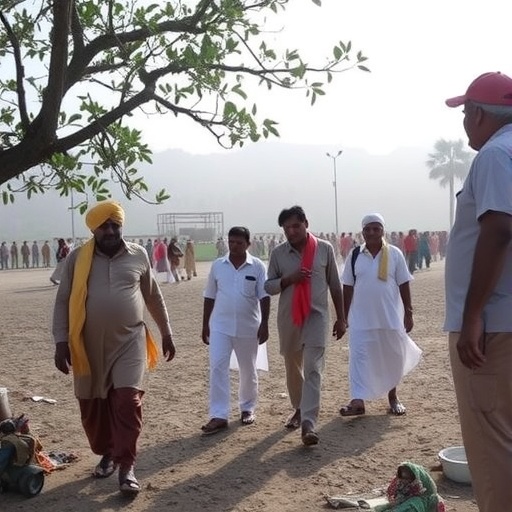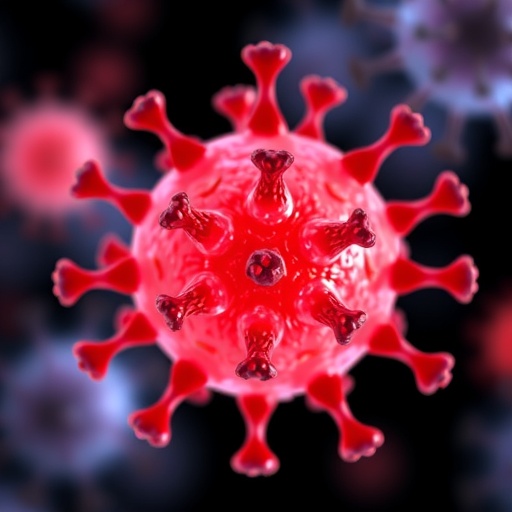In a groundbreaking forensic genetics study, researchers have unveiled new insights into the genetic polymorphism and tri-allelic patterns within the Brahmin population of Gujarat, India, employing a comprehensive battery of 21 autosomal short tandem repeat (STR) markers. The study offers an unprecedented look into the genetic diversity and complexities hidden in a specific Indian subpopulation, illustrating the power of advanced forensic genetics to dissect population structure and aid in identity verification applications.
Autosomal STR markers are short repeating sequences of DNA located on the autosomes—non-sex chromosomes—widely used in forensic analysis due to their high variability between individuals. These markers have become the cornerstone of human identification and kinship testing worldwide. The application of 21 such markers presents a robust framework for examining polymorphisms, allowing scientists to detect subtle genetic differences, making this study a significant contribution to forensic science, especially in an Indian context where population genetics remains underexplored.
A key highlight of this research is the detection and analysis of tri-allelic patterns, which are less common genetic variants where three alleles appear at a single STR locus instead of the usual two. This tri-allelic phenomenon complicates standard forensic analyses as it can lead to misinterpretations of DNA profiles if not properly understood. By investigating these tri-allelic patterns in a targeted population, the study fine-tunes our understanding of genetic variation and injects a layer of precision into forensic evaluations that could redefine standards in DNA evidence interpretation.
The Brahmin community of Gujarat, chosen for this study, represents a fascinating genetic pool due to their distinct endogamous practices and rich cultural history. These social practices often result in unique genetic signatures, making them an ideal subject for forensic geneticists aiming to establish accurate genetic baselines that can serve forensic casework, paternity disputes, and population genetic research across India and globally.
By systematically genotyping these 21 STR loci, the researchers constructed a comprehensive allele frequency database for this population. Such databases are instrumental in calculating match probabilities, estimating relatedness, and assessing genetic diversity. Developing region- and community-specific allele frequency databases is critical to advancing forensic methodologies, ensuring that forensic labs do not rely on generalized data that may not be representative of highly endogamous or regionally isolated populations.
The presence of tri-allelic patterns, identified at several loci, demands deeper methodological scrutiny. Standard forensic workflows typically expect two alleles per locus, reflecting a diploid organism’s genetic makeup. Tri-allelic patterns challenge these expectations, requiring forensic scientists to discern whether such findings represent genetic anomalies, mutations, or artifacts. The study’s precise characterization of these patterns in the Brahmin population provides instructive guidelines for forensic casework, ensuring that tri-allelic variants enhance, rather than hinder, genetic interpretation.
Moreover, the study’s approach emphasizes not only allele frequency cataloging but also statistical parameters such as power of discrimination, polymorphism information content, and matching probability. These metrics serve as quantitative hallmarks emphasizing each marker’s efficacy and discriminatory potential within the population. Thoughtful integration of these statistical measures underpins the scientific rigor essential to forensic genetics, enhancing reliability and reproducibility of findings that might later influence judicial outcomes.
An intriguing aspect of this research is how it bridges the gap between pure population genetics and applied forensic science. While forensic genetics traditionally focuses on personal identification and kinship analysis, population-specific studies like this enrich the global genetic database, offering broader anthropological and evolutionary insights. They enable investigators to infer migration patterns, historical lineage admixture, and micro-evolutionary dynamics within human groups that, so far, have remained genetically under-characterized.
The forensic implications of these findings are profound. India’s vast genetic and ethnic diversity requires differentiated forensic tools tailored to distinct populations. Generic or pan-ethnic genetic databases risk inaccuracies in identity verification and crime scene investigations. This study’s population-specific data empower forensic laboratories to refine match calculations, mitigate false positive or negative identifications, and ultimately maintain higher standards of legal integrity in forensic proceedings.
Beyond forensics, this research sheds light on the genetic complexities imposed by cultural practices such as endogamy, prevalent in the Brahmin caste and many other Indian communities. Such endogamous trends intensify genetic drift phenomena, increase homozygosity, and can elevate the frequency of rare alleles or unique tri-allelic patterns. Understanding these trends is vital for accurate population genetics and medical genetics, where such unique patterns could impact disease association studies or pharmacogenomic profiling.
Importantly, the comprehensive STR panel used in this study aligns with global forensic standards, facilitating interoperability between international forensic databases. This alignment is crucial in an increasingly globalized world where crimes and familial relations transcend geographical boundaries. The enhanced genetic resolution contributes to cross-border forensic cooperation, crime solving, and identity confirmation for diaspora populations that would have otherwise been underrepresented in global genetic repositories.
The methodological rigor of this study is also noteworthy. The integration of stringent quality controls, reproducibility assessments, and precise genotyping calls ensures data integrity. Such methodological stringency is essential in forensic genetics, where even a minor genotyping error could drastically alter case outcomes. The research team’s detailed protocols fortify the reproducibility of data, serving as a blueprint for future population-specific forensic genetic investigations.
Another dimension explored is the potential complications posed by tri-allelic patterns in mixed DNA samples typically encountered in forensic casework. Mixed samples from multiple individuals often confound analysis; tri-allelic variants add complexity in distinguishing individual contributors. By characterizing these tri-allelic occurrences, the study extends forensic interpretation beyond simple allelic counting, guiding forensic scientists in deconvoluting complex DNA profiles with heightened accuracy.
In conclusion, this pioneering effort represents a significant leap in forensic genetics tailored to the Brahmin population of Gujarat. It exemplifies how population-specific genetic research can advance forensic methodologies and reinforce the scientific validity of DNA-based legal evidence. As forensic science evolves, such studies underscore the necessity of understanding genetic diversity and anomalies deeply, ensuring justice is served through precision and accuracy.
The implications of this study ripple beyond forensic science into anthropology, genetic epidemiology, and personalized medicine. It showcases an elegant confluence of genetic technology, cultural understanding, and applied science, making forensic research not just a reactive tool against crime but a proactive agent illuminating human diversity and lineage.
Future research inspired by this study could incorporate next-generation sequencing and whole-genome approaches to unravel even finer layers of genetic variation within Indian subpopulations, revealing novel markers of forensic and medical relevance. Moreover, the integration of such high-resolution data with forensic databases worldwide will amplify the capacity to solve crimes and understand human genetic history on a global scale.
Subject of Research: Genetic polymorphism and tri-allelic pattern analysis in the Brahmin population of Gujarat, India, using autosomal STR markers.
Article Title: Forensic insights into genetic polymorphism and tri-allelic pattern in the Brahmin population of Gujarat, India, using 21 autosomal STR markers.
Article References:
Fulkar, A.A., Dave, V. & Shukla, M.A. Forensic insights into genetic polymorphism and tri-allelic pattern in the Brahmin population of Gujarat, India, using 21 autosomal STR markers. Int J Legal Med (2025). https://doi.org/10.1007/s00414-025-03619-7
Image Credits: AI Generated
Tags: advancements in forensic scienceautosomal short tandem repeat markersautosomal STR marker applicationsforensic analysis of genetic diversityforensic genetics in Indiagenetic polymorphism in Gujarat Brahminsgenetic variation in Indian subpopulationsidentity verification through geneticsimplications of tri-allelic patternsmisinterpretations in DNA profilingpopulation genetics of Indian Brahminstri-allelic patterns in DNA





